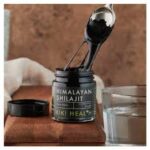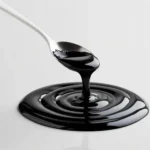
“Are you tired of waking up with achy muscles after a tough workout? Look no further, because i’ve got 7 proven methods for fast relief from muscle soreness. Say goodbye to the pain and hello to a speedy recovery with these game-changing techniques.”
Delayed onset muscle soreness

Delayed onset muscle soreness (DOMS) is a common condition that affects people who engage in physical activity, especially those who are new to exercise or have increased the intensity of their workouts. It’s characterized by a dull, aching pain that typically sets in 24 to 48 hours after the exercise and can last for several days.
Delayed onset muscle soreness is caused by microscopic tears in the muscle fibers, resulting from the stress of exercise. When we exercise, we subject our muscles to repeated contractions, which causes the muscle fibers to stretch and strain. This can lead to the development of tiny tears in the muscle tissue, which trigger an inflammatory response.
The inflammation causes the release of certain chemicals, such as cytokines and prostaglandins, which stimulate the pain receptors in the affected area. This is why we feel soreness and discomfort in our muscles after a tough workout/ exercise.
While delayed onset muscle soreness can be uncomfortable, it’s generally not serious and will typically resolve on its own within a few days. In the meantime, there are several things you can do to alleviate the symptoms of sore muscles, including gentle stretching, massage, and the use of heat or cold therapy.
It’s worth noting that the onset muscle soreness(doms) is different from acute muscle soreness, which is the immediate pain or discomfort we feel during or immediately after exercise. Acute muscle soreness is caused by the buildup of lactic acid in the muscles, which can be relieved by resting and allowing the body/ muscles to recover. DOMS, on the other hand, is caused by the micro tears in the muscle fibers and requires different treatment approaches.
Muscle pain

While muscle pain and soreness are both common after physical activity, it’s important to understand that they are very different and require different approaches to treatment. Muscle soreness, as we’ve discussed, is typically caused by microscopic tears in the muscle fibers and is a natural part of the recovery process. It can usually be managed with self-care techniques, such as stretching, massage, and rest.
Pain, on the other hand, can be a sign of a more serious injury or underlying condition. Pain in muscles can be acute, as in the case of a muscle strain or sprain, or chronic, as in the case of conditions like fibromyalgia or myofascial pain syndrome.
If you’re experiencing pain that is severe, persistent, or interfering with your daily activities, it’s important to seek the advice of a healthcare professional. A physiotherapist can help diagnose the underlying cause of your pain and develop a treatment plan that’s tailored to your specific needs.
Some common treatments for muscle pain include physical therapy, chiropractic care, acupuncture, and medication. The specific approach will depend on the underlying cause of the pain, as well as your overall health and medical history.
In summary, while muscle soreness is a natural part of the recovery after physical activity, muscle in pain can be a sign of a more serious injury or underlying condition. If you’re experiencing muscle pain that is severe or persistent, it’s important to seek the advice of a healthcare professional, such as a physiotherapist, to help diagnose the underlying cause and develop an appropriate treatment plan.
Sore muscles

Muscle soreness, as we’ve discussed earlier, is a common condition that affects people who engage in physical activity(eg exercise, heavy workout, even static stretching). It’s usually a result of pushing our muscles beyond their usual capacity or engaging in new types of exercises that our bodies are not used to.
While muscle soreness can be uncomfortable and even painful, it’s generally not serious and can be managed with self-care techniques. Rest and gentle stretching can help alleviate the symptoms of muscle soreness, as can the use of heat or cold therapy.
Another effective way to manage muscle soreness is to engage in light physical activity, such as walking or swimming. This can help increase blood flow to the affected area, which can help reduce inflammation and promote healing.
It’s worth noting that muscle soreness can be different for everyone, and the severity and duration of symptoms can vary depending on a number of factors, including age, muscle groups worked on, fitness level, and overall health. While muscle soreness is usually not a cause for concern, it’s important to listen to your body and avoid pushing yourself too hard, especially if you’re experiencing pain or discomfort.
If you’re experiencing severe or persistent muscle soreness, it may be a sign of a more serious injury or underlying condition. In these cases, it’s important to seek the advice of a healthcare professional, such as a physiotherapist or sports medicine doctor, to help diagnose the underlying cause and develop an appropriate treatment plan.
How do i recover sore muscles the fastest?
- Foam rolling – using a class like “Deep Roll” can help you roll out tight muscles and improve circulation to promote healing.
- Stretching and joint mobility – taking a class like “Stretch Mob” can help you improve your flexibility and range of motion, which can reduce muscle soreness and prevent future injuries.
- Functional stretch therapy – one-on-one sessions with a professional can help you target specific areas of tightness or pain and develop a personalized stretching routine.
- Massage – getting a professional massage can help relieve muscle tension and soreness, and promote relaxation and recovery.
- Ice baths – this can help improve circulation and reduce inflammation in the affected area, promoting faster recovery.
- Breathwork class – taking a class at Movement & Sports Medicine Centre can help you learn techniques to improve your breathing and reduce stress, which can aid in recovery from muscle soreness.
- Rest and recovery – sometimes the best thing you can do for muscle soreness is to simply rest and let your body recover. This can include taking a break from exercise, getting plenty of sleep, and eating a healthy, balanced diet.
Taking over the counter stuffs such as anti inflammatory drugs is so not recomended! This is because if you do it often your natural process for inflammatory process does not get efficient & let your muscle damage be fully repaired. Instead, choose to eat higher amounts of anti inflammatory foods to help reduce muscle soreness, & if to reduce swelling(use compression garments instead).
Cold bath
Ice baths are a popular method for reducing muscle soreness and speeding up recovery after exercise. The idea behind an ice bath is to immerse your body in cold water, typically at a temperature of around 50 degrees Fahrenheit or lower, for a period of 10-15 minutes.
There are several benefits to taking an ice bath for soreness. Firstly, the cold water can help reduce inflammation in the muscles, which can alleviate soreness and promote healing. Additionally, the cold can help constrict blood vessels, which can help flush out waste products and toxins that can accumulate in the muscles after exercise.
It’s worth noting that while ice baths can be effective, they are also quite intense and can be uncomfortable for some people. For this reason, it’s important to start slowly and gradually build up your tolerance to the cold water. It’s also important to avoid taking ice baths too frequently, as this can increase the risk of injury or damage to the muscles.
In terms of the physiological process, when you immerse your body in cold water, your blood vessels constrict in response to the cold temperature. This causes blood to be shunted away from the surface of the skin and towards the internal organs. As a result, the rate of circulation in the body slows down, which can reduce inflammation and promote healing.
When you come out of an ice bath, your body will start to warm up again and the blood vessels that were constricted in response to the cold temperature will begin to dilate. This allows for an increased flow of blood and oxygen to the muscles, which can promote healing and recovery.
Some people report feeling a rush of energy or a sense of invigoration after an ice bath, while others may feel fatigued or a bit lightheaded. It’s important to listen to your body and take it easy for a while after getting out of the ice bath.
To maximise the benefits of the ice bath, it’s important to engage in some light physical activity, such as strength training, stretching or walking, after getting out of the bath. This can help promote blood flow to the muscles and prevent stiffness or soreness from setting in.
In order to get the most benefit from an ice bath, it’s recommended that you take one once or twice a week, depending on your level of activity and the severity of your muscle soreness. It’s also important to ensure that you stay hydrated before and after the ice bath, as the cold water can cause dehydration and electrolyte imbalances.
Generally speaking, ice baths/ cold water immersion can be an effective tool for reducing muscle soreness and promoting recovery after exercise(powerful & potent natural anti inflammatory stuffs). However, it’s important to use them safely and appropriately, and to be aware of the potential risks and discomfort associated with this method. If you want professionally trained cold bath/ cold exposure experts, then you can check 10 Degrees out.







